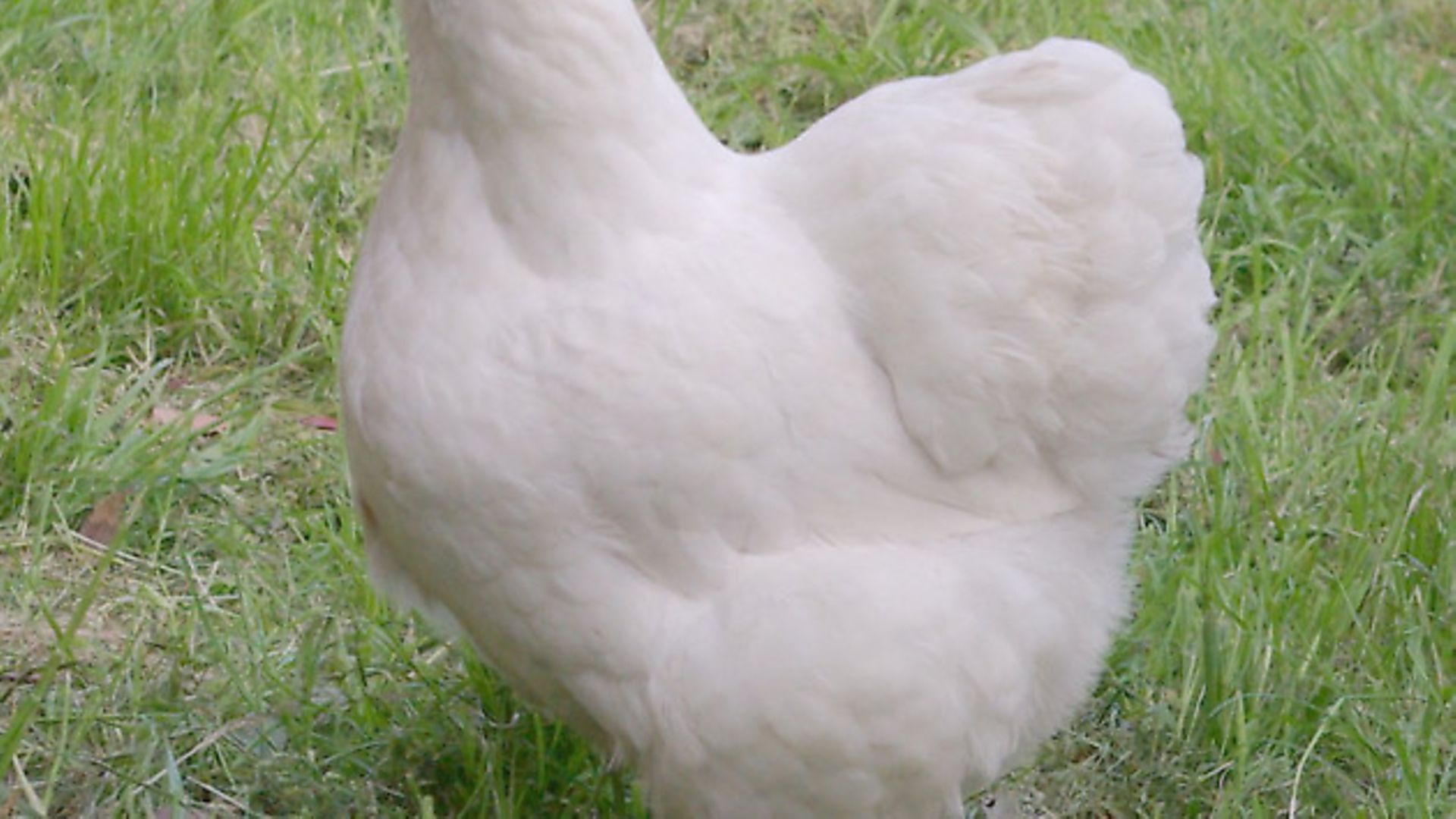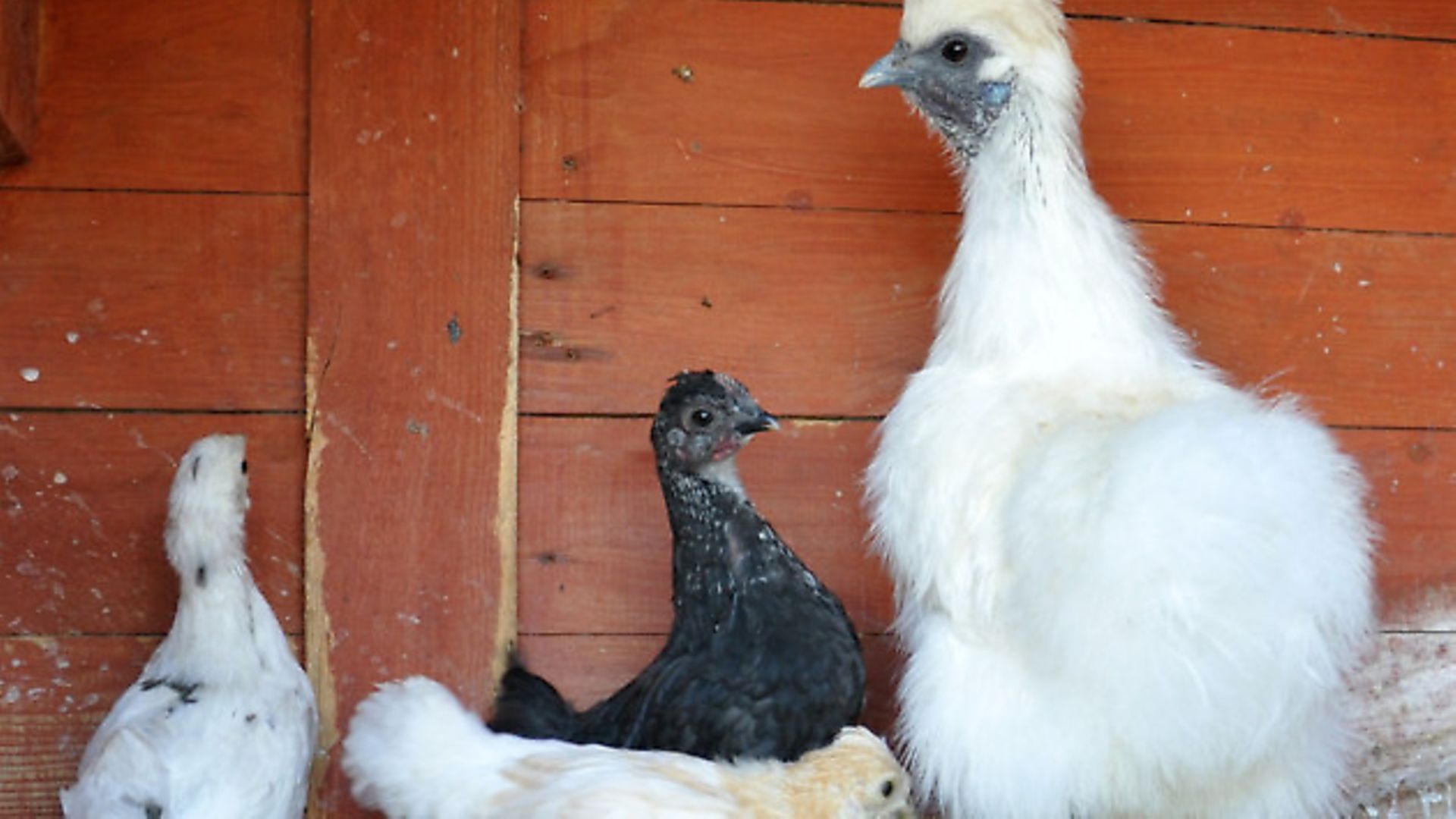Our writers choose their favourite breeds, and explain why they made these choices. This month: Jeremy Hobson

Until very recently, I don’t think there has ever been a time in my life when I’ve not had chickens of some sort or another around me. As a child, we lived next door to my grandparents on a small smallholding and running around the orchard were always a dozen or so nondescript hens kept for their eggs and, in a corner, under the pear trees, a pen of Ancona bantams. The large fowl hens were quite tame and let me pick them up; the Ancona’s were not and the cockerel caused my brother and me much consternation if we were ever asked to go in the pen as he would hurtle towards us in an effort to protect his harem!

Wyandottes
Not content with ‘sharing’ the family chickens, the day came when, aged about ten, I wanted a pen of birds of my own. There was parental resistance for a while but eventually my father took me to see a friend of his who bred Wyandotte bantams. I fell in love with the Wyandotte breed there and then and, with the generosity for which poultry fanciers are known, my father’s friend, made up a trio of white Wyandottes which was to form the nucleus of my eventual strain.
Generous I say, and generous I mean for the cock bird had been Harry’s best but was getting too old to show; likewise, one of the hens – but the third bird was a young unrelated pullet from his current prize-winning pen. Obviously not every chick hatched from a clutch of eggs is going to shape up to breed standard but it certainly helps if the right genes are there. It’s no cliché to say that “success breeds success” and the more I hatched and selected; the more shows I won and the more enthused I became.
What it is about the Wyandotte that make this American breed so special to me I couldn’t really say; maybe it’s their rounded shape and the fact that, for a heavy bird, they lay so well, or perhaps it is simply their undoubted character – their antics and attitude can easily put a smile on your face.
Not all Wyandottes are as easy as the white variety to breed to standard, though. The partridge type, for instance, is immensely complicated and requires separate cock and hen breeding pens if you are to go down the show route. The blacks are somewhere between the two when it comes to the difficulty of achieving show standard – but that fact didn’t put off my son who, during his early teenage years, had a small breeding flock of just the right sort. His sister, however, chose Silkie bantams as her favourite breed – and I, by default, got to love them too.
Silkies
Silkies, like Wyandottes, have that same delightful rounded shape and oodles of character and I don’t know of anyone that isn’t taken by the charm and unusual appearance of the breed: they appeal to children and adults alike. Their quiet, gentle nature makes them a perfect choice for almost everyone due to the fact that they rarely becomes alarmed and, therefore, have little or no inclination to flutter about madly at the slightest disturbance.
As most readers will know, the Silkie’s most obvious feature is the unusual feathering. They also have a small crest or ‘top knot’ which looks like a little pom-pom on the females: both male and female have feathered legs. The crest and legs can get a little soiled in wet, muddy conditions and so, where possible, it might be best if they can be kept in a covered house and run during any prolonged spells of inclement weather. As to the colour varieties, they include black, blue, gold, partridge and white but it was the partridge type which was favoured by my daughter.
Marans
A breed I would never have chosen were it not for circumstances is the Marans. We bought our home in France from a couple we had known in the UK and when they moved over here in 1997, they’d brought fertile Marans eggs with them and an incubator. The eggs hatched and, despite some potentially unhealthy in-breeding – but with the influx of fresh blood from a cockerel bought in France, their initial strain continued to survive for a decade or more – so, when we moved in, we also inherited a pen of French Marans which had their roots in Britain!
The Marans breed is hugely popular here in their country of origin and fanciers go to great lengths to ensure that examples of the breed are bred not only for conformation, but also that future generations will continue to lay eggs that have a ‘deeply dark-brown coloured shell’. In fact, for many, the egg colour is probably the most important factor and they will not breed from a pullet until she has laid several eggs and the colour proved to have remained consistent.
Like my other ‘favourites’, they are well known for their friendly character: in fact, when we had Marans running around the garden and on sunny days when the back door was open, it was a frequent occurrence to find them inside the kitchen ready to carry out a conversation with any human, cat, or dog who was prepared to listen!
Image(s) provided by:
Archant







